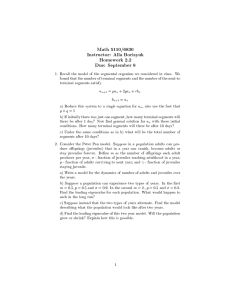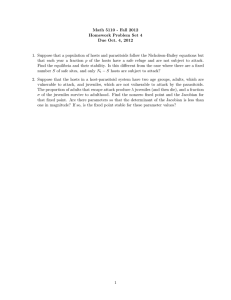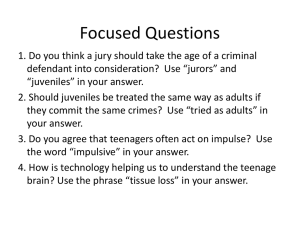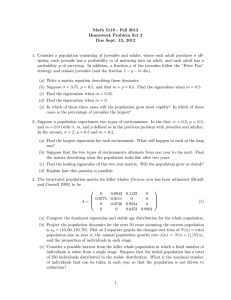Math 5110/6830 Instructor: Alla Borisyuk Homework 2.2
advertisement
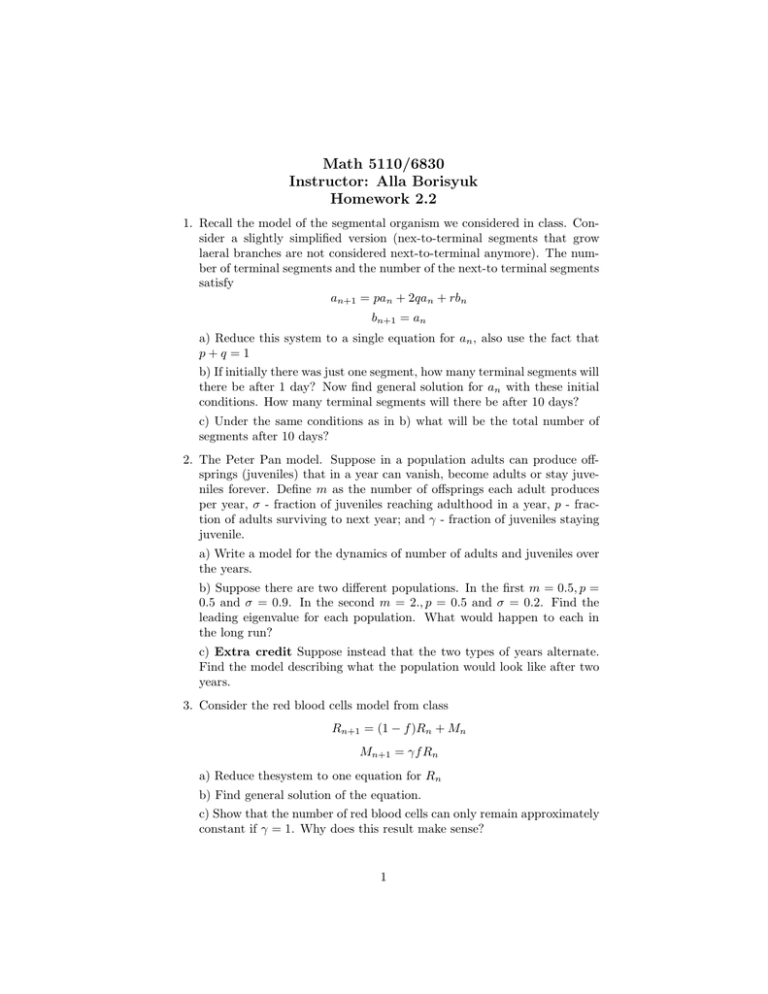
Math 5110/6830 Instructor: Alla Borisyuk Homework 2.2 1. Recall the model of the segmental organism we considered in class. Consider a slightly simplified version (nex-to-terminal segments that grow laeral branches are not considered next-to-terminal anymore). The number of terminal segments and the number of the next-to terminal segments satisfy an+1 = pan + 2qan + rbn bn+1 = an a) Reduce this system to a single equation for an , also use the fact that p+q =1 b) If initially there was just one segment, how many terminal segments will there be after 1 day? Now find general solution for an with these initial conditions. How many terminal segments will there be after 10 days? c) Under the same conditions as in b) what will be the total number of segments after 10 days? 2. The Peter Pan model. Suppose in a population adults can produce offsprings (juveniles) that in a year can vanish, become adults or stay juveniles forever. Define m as the number of offsprings each adult produces per year, σ - fraction of juveniles reaching adulthood in a year, p - fraction of adults surviving to next year; and γ - fraction of juveniles staying juvenile. a) Write a model for the dynamics of number of adults and juveniles over the years. b) Suppose there are two different populations. In the first m = 0.5, p = 0.5 and σ = 0.9. In the second m = 2., p = 0.5 and σ = 0.2. Find the leading eigenvalue for each population. What would happen to each in the long run? c) Extra credit Suppose instead that the two types of years alternate. Find the model describing what the population would look like after two years. 3. Consider the red blood cells model from class Rn+1 = (1 − f )Rn + Mn Mn+1 = γf Rn a) Reduce thesystem to one equation for Rn b) Find general solution of the equation. c) Show that the number of red blood cells can only remain approximately constant if γ = 1. Why does this result make sense? 1
